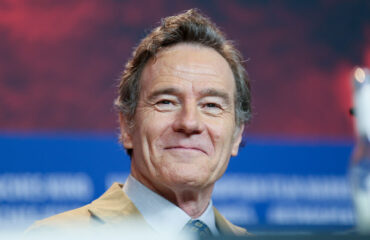When you hear the word “flow,” images of the 1970s may pop up. Flow fusion jazz music. Farrah Fawcett’s flowing locks. The adage “go with the flow” comes from the same era. It means: “Relax, man. Accept the situation.”
But the original meaning of the noun “flow” carries few of those laissez-faire connotations. Etymologists tell us that the noun form of “flow” comes from the 1640s and means “any strong, progressive movement comparable to the flow of a river.”
The “strong progressive” flow of a river is often more exhilarating than relaxing. To “go with the flow” of a river—whether by kayak, canoe, or when white water rafting— often demands stamina, resilience, and focus. Even if you’re floating along a lazy river, you may have to deal with an undertow.
Take the Niagara River. Every second, 3,000 tons of water flows over the Niagara escarpment in Niagara Falls. That’s enough power to generate a quarter of all the electricity in the state of New York and the province of Ontario.
Or how about the River Amazon? One of the mightiest rivers in the world, the Amazon hydrates an entire continent. It holds one-fifth of all the world’s running water. No wonder the explorer and conquistador Francisco de Orellana wanted to name it after himself when he first arrived in South America in the 1540s.
“Rio de Orellana”, however, never stuck. An Indigenous tribe of fierce female rulers defended their territory. So Orellana changed his tune. Now the Amazon river and surrounding rainforest are known by the same name that Herodotus and Homer give to mythical women warriors.

The “New” Psychology of Flow
There’s another story behind the word “flow.” If you’re familiar with the positive psychology movement, you may already know the late Hungarian psychologist Mihaly Csikszentmihalyi.
Csikszentmihalyi first coined the term “flow” when he was interviewing exceptionally talented people across a range of professional fields—from business to sports and art to music. Each of his interviewees pointed to an “optimal experience” when they were operating at their peak performance. Each entered states of what seemed like effortless flow with their craft. Each used metaphors of water to describe that peak performance. And each relayed that their optimal state of mind resembled the feeling of a river carrying their being along its current. In essence, challenging tasks seemed easy instead of hard work.

For many people, the psychological state of flow disrupts their habitual, subjective perception of time. Minutes might feel like hours. Hours like minutes. Basketball players and other athletes call that attentive all-encompassing state of mind “the zone.”
Flow appears in educational contexts too; it is an optimal “zone” for human learning. Everyone from rock climbers and chess players to scientists and painters learn best when they enter their flow. It’s a zone of few distractions; a merging of awareness with performance; a feeling of letting go of a separate sense of an actor and action.
When you’re in a state of flow, the pleasure and satisfaction of it all helps your brain to remember. That feel-good state of being primes the brain to seek out flow experience again. And again. And again. Flow states are both generative and regenerative. They’re rewarding in and of themselves. They are “autotelic.” Simply engaging in flow-inducing tasks motivates you at an intrinsic level to keep going. The experience of flow is often so intense and powerful, that when you’re in it, nothing else matters.
If you’ve ever lived with an artist obsessed with his creative project, you know the hold that a flow state can take on an individual. But groups of people can experience flow too. Soccer players flow together on the field. Scientists collaborating in a laboratory may lose track of time when they enter deep absorption in their research. Csikszentmihalyi discovered that human beings in states of flow can work relentlessly on tasks without feeling any fatigue, boredom, or self‐doubt.
But flow can happen when performing everyday tasks too. You’ve probably unloaded the dishwasher so many times that if you put your mind to it, you might easily enter heightened states of awareness while arranging the wine glasses back on their rack.
What Do I Need To Do To Enter My Flow?
People who seek flow states, or peak performance, are usually not after external rewards. So if your aim is to truly “go with the flow,” you may need to let go of what you customarily consider “rewarding.”
Repeated states of flow often lead to extraordinary success. But you need to focus first on the inner experience. If you want to be an authentic “Flow Master,” get attuned to letting go of an expectation of outcomes. When you’re driven by an inward feeling of magnificence, grace, power and sync—there’s nothing left for you to do but keep at it, keep practicing, keep going with your flow. Part of the adventure is the delicious ambiguity of the adventure.

Csikszentmihalyi also recognized that to enter flow, you first need to develop a high degree of skills and expertise in your chosen field. Welcome the challenges, he said. If the tasks you choose come too easily, you’ll get bored. If the things you get into are too difficult, you’re bound to feel frustrated and give up. Sometimes, before you can get into “flow,” you have to get through the stress and clumsy beginnings of learning and discovering the process required to be in the zone.
Flow, to Csikszentmihalyi, represents a “sweet spot” between extremes. The Buddha might call that sweet spot “the middle way.” Push yourself beyond your comfort zone, but you don’t push yourself so far that you get stuck in an extreme challenge that you can’t handle. Flow requires that gentle balance between stress and ease. The only way to reduce stress and increase ease is through deliberate practice.
So think of something you enjoy doing. Something that you’re already fairly good at. Consider what mindset and skills you need to get really good at it. What’s missing in your repertoire? At first, you may feel like you have to put in a ton of effort to get better. You may feel like you’re getting nowhere. Or going in circles. That’s an opportunity to self-regulate your emotions and your desire to quit too soon.
Take it step by step.
Once you get a taste flow, you’ll know you’re there. You’ll have gathered enough skill in your area that you can lean into the experience—effortlessly. In that wonderful feeling of letting go, the feeling of flow is often joyful and life-enhancing.
Csikszentmihalyi called it a “peak” experience because it’s the summit of what the human mind can experience. Is there a religious quality to that experience? I guess that’s up to how you go with the flow.
The Brain Science of Flow
So, what’s happening at a neurobiological level when you experience flow?
Despite its application for psychological health, well-being, and performance, neuroscientists still have surprisingly little knowledge of what underlies the neurocognitive mechanisms of flow. Part of the problem has been that so many of the studies on flow rely on self-report measures.
How does flow differ from states of mindful attention? Or those of deep concentration? How can any of those states be accurately measured?

One of the gifts of neuroscience is that it opens up the possibility of finding novel ways to measure states of flow, concentration, and peak performance.
For example, recent brain-scan studies suggest that large-scale brain networks may be involved in the core dimensions of flow. Most brain researchers focus on three core large scale networks, which are typically referred to in the literature as the default mode network (DMN), the central executive network (CEN), and the salience network (SN).
But for our purposes, it’s easier to think of the default network as the “imagination” network, a term Dr. Scott Barry Kaufman introduces in Wired to Create. The DMN imagines the future based on what you imagine your past to be. It also generates worries based on what you think has happened before and what you fear may happen again.
The central executive network is a bit like the chief executive officer, or CEO, of your brain networks: it orchestrates logical thoughts and plans actions for the future. The salience network chooses what information is “salient” or relevant within awareness and enables higher states of awareness as well as acts a mediator between the “CEO” and the “imagination” networks
Good news is, you can learn to work with those brain networks to prime them for flow. You can turn into the master of your brain networks if you put your mind to it.
Train your imagination network by giving yourself space to be playful, to delight in daydream. Optimize your central executive network by doing crosswords, math problems, and language games. Switch between the two networks. Do a math problem for one minute and then do a silly interpretive dance to the equation. Believe it or not, that ridiculously simple activity brings your salience network online. Invite the salience network’s natural ability to achieve heightened levels of self-awareness, empathy, and compassion by activating your care and empathy for other people.

To optimize your flow, I’ve also got a cool new INNERCISE for you.
I call it PRIME NINE.
PRIME NINE represents nine things you can practice right now to prime your brain networks for optimal integration and FLOW. Prime your DMN, CEN, and SN in your inner NEUROGYM, so they’re in their best shape for when you get your flow on.
Follow these techniques. Effortless success and peak performance may be easier than you think!
Practice fusing attention with action.
Flow is all about bringing full-body, full-brain consciousness to whatever you’re up to, so show up with your whole self.
Remember to focus.
Easily distracted? Happens to the best of us. Choose something to bring that monkey mind back in line. Make it handy. Train your inner monkey with your breath, an inner value, an image—whatever works for you.
Initiate the ritual of letting go of what other people think of you.
Flow doesn’t happen if you’re self-conscious. Extinguishing worries and any tendencies to ruminate on what you think you are lacking.
Master your thoughts and emotions.
Don’t mistake this step for forcing things to go your way. This isn’t about controlling all your thoughts or emotions or behaviors—or for that matter, the thoughts, emotions and behaviors of other people! Self-mastery is not self-dictatorship.
Envision your goals.
Choose a few clear, concrete goals. What do you want to achieve? Without that direction, you may never gain the momentum and build the skills you need to enter flow.

Notice how it’s going.
When you enter a state of flow, be open to the natural feedback mechanism of your own brain. Pay attention without judgment, blame, shame, guilt or justification. Just BE aware.
Invite in the pleasure principle.
Flow states are rewarding in and of themselves. Let go of the grasping for external rewards. Find the intrinsic delight in the activity itself. Be Curious. When you do that, you’ll find ways to press “repeat” on your flow. You’ll also have more fun!
Nevermind the clock.
Flow states tend to work beyond our ordinary perceptions of time. Let that altered subjective experience of the minutes and the hours just be.
Experience the sweet spot.
Flow happens along the middle path between difficulty and ease. Find your own sweet spot by challenging yourself in ways so that you’re neither extending beyond your capabilities nor insulting them! Remember, some stress is good stress. This is called eustress and it’s the opposite of distress.
Wherever you are, whatever skills you have, whatever your unique talents are—prime your brain for a walk on cloud nine. Integrate PRIMENINE into your daily ritual until it comes so naturally that you flow like your favorite river all the way up beyond the clouds of your summit.
Endnotes
- Kee, Ying Hwa, and C.K. John Wang. “Relationships between Mindfulness, Flow Dispositions and Mental Skills Adoption: A Cluster Analytic Approach.” Psychology of Sport and Exercise 9, no. 4 (2008): 393–411. https://doi.org/10.1016/j.psychsport.2007.07.001.
- Linden, Dimitri, Mattie Tops, and Arnold B. Bakker. “Go with the Flow: A Neuroscientific View on Being Fully Engaged.” European Journal of Neuroscience 53, no. 4 (2020): 947–63. https://doi.org/10.1111/ejn.15014.









